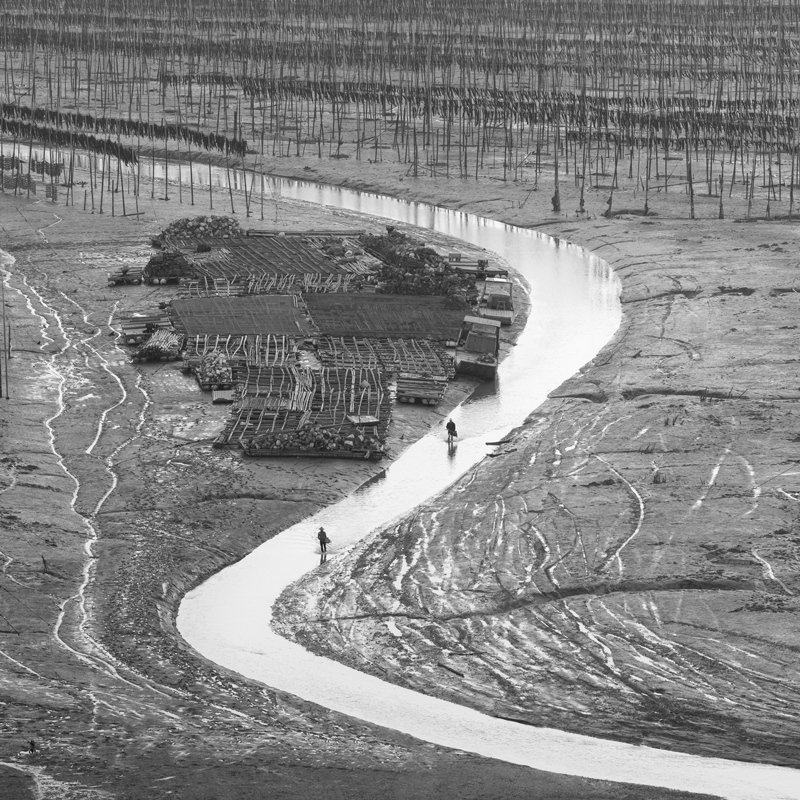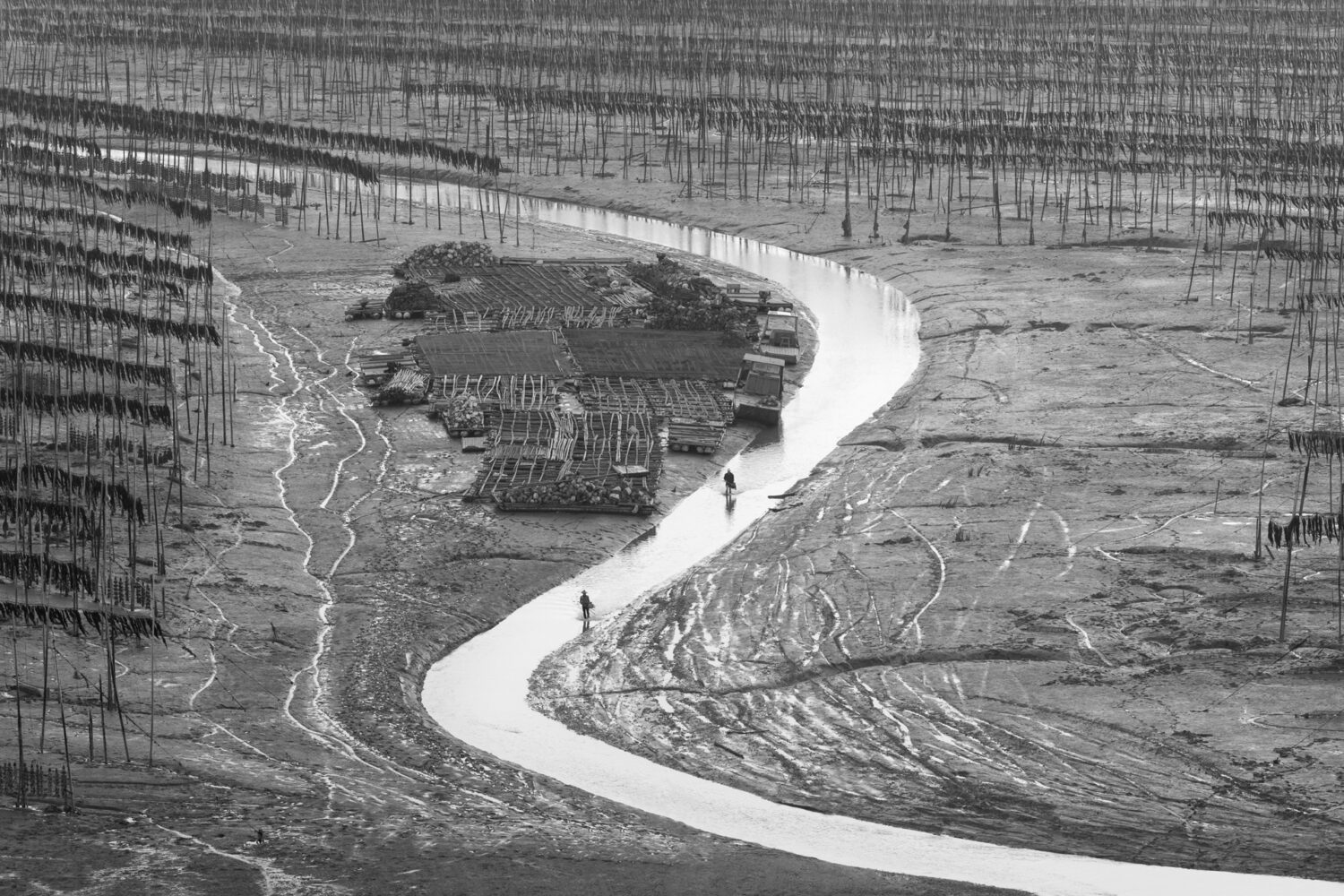

Harvesting the Pattern Puzzle | op. 2
“There is in all things a pattern that is part of our universe. It has symmetry, elegance, and grace – these qualities you find always in that the true artist captures. You can find it in the turning of the seasons, the way sand trails along a ridge, in the branch clusters of the creosote bush of the pattern of its leaves. We try to copy these patterns in our lives and in our society, seeking the rhythms, the dances, the forms that comfort. Yet, it is possible to see peril in the finding of ultimate perfection.”
| Sometimes, the unexpected happens. Very early, originally waiting for a sunrise near Xiapu, I realised that also others waited for the sunrise to bring in the tide, filling the channel with water that gives path to the harvesting boats. It seemed to be one of their days, the day of the seaweed harvest. Hundreds of individuals waited on their boats in the port to set sail.
Seaweed is a plant-like organism that usually grows on rocks in coastal areas. In China, the culture on artificial floating rafts started in the 50s. The annual Chinese seaweed production from more than 200’000 acres of seaweed farms is about 2’000’000 wet tons. This seaweed grows in kelp ropes on a floating line. On the harvesting day, they are collected in small boats and put on bamboo drying lines to dry them in the wind. The 2’000’000 wet tons seaweed weight correspond to about 250’000 dry tons of weight. Determining the right harvesting time is critical for the farmers, as the lowest wet-to-dry weight ratio has to be optimised with the highest per-unit area production. Seaweed is mainly used as vegetable in China.
Within minutes all harvesting boats left the port. Beautiful patterns emerged in the sunrise hours of individuals starting to de-connect the seaweed from their floating lines, collect them in their boats. With loaded boats, they returned to the port in order to put the seaweed onto the drying lines. These activities kept them busy up until late at night.
The patterns that emerged from bamboo poles, fisher nets and stone columns inserted in the mudflats that are all used to dry seaweed, kelp, oyster or laver. So beautiful, how macro patterns emerge from different micro behaviors: Sun rising and setting, tides coming in and flowing out, but the harvesters make the difference. By driving in and out with their boats they put seaweed on the bamboo sticks or leave them and thereby create beautiful patterns they seem to puzzle.
| This photograph is part of the project: Harvesting the Pattern Puzzle.
Click on the image to see the full-sized photograph.
April 2018
